DRUGS: WHAT YOU
NEED TO KNOW Booklet

Signs and Symptoms of Cannabis Use
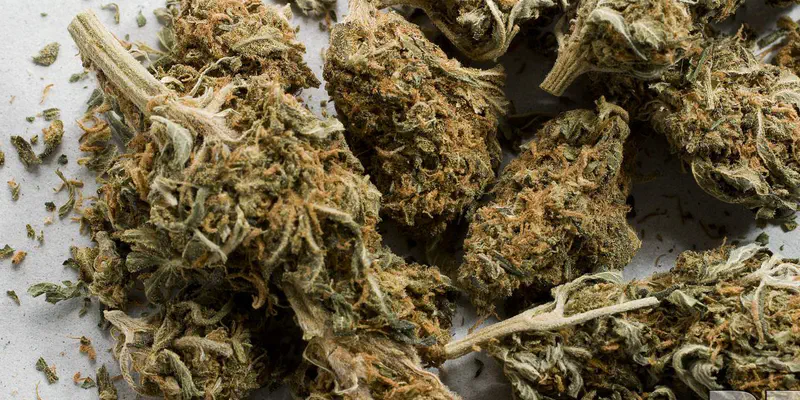
Courtesy of DEA.gov
Other than alcohol, cannabis is the most commonly used drug in the world. In most countries, it is still an illicit drug, even as some of its components gain greater acceptance as products to be used for medical purposes.
Around the world, opinions about cannabis have been shifting. Comparative tests of addictive substances like alcohol, cannabis, cocaine, and amphetamine show that cannabis is less threatening to life than other illicit drugs, but can have profound negative effects on childhood development and mental health.1 With penalties for possession and use of this drug becoming milder over the last few decades,2 the opinions of young people surveyed in EU nations about the risks of using cannabis have changed over time.3 Unfortunately, the age group likely to suffer the greatest consequences from use may perceive the shifting perceptions as an invitation to use the drug.
Anyone choosing to use cannabis for medical purposes or as an intoxicant would be wise to learn the short-term and long-term effects of this drug. Every drug has some hazardous or even dangerous effects, even if immediate death is an unlikely result.
Cannabis Use Across European Nations
Under international law, the official position is that the cultivation and use of cannabis should only be permitted for “medical and scientific purposes.”3 But in practice across Europe, the reality is different.
It is still possible to get arrested for possession of cannabis in all countries except Spain, Portugal, Italy, Belgium and Ireland. The degree to which laws are strictly enforced varies from country to country. The Netherlands, for example, is renowned for permitting cannabis “coffee shops” where the drug can be consumed without risk of arrest. Portugal has decriminalized personal quantities of this drug, but possession and trafficking are not, strictly speaking, legal. All countries consider trafficking this drug to be a crime.
An estimated 17.1 million Europeans aged 15 to 34 are using cannabis each year.4 That’s 14% of this age group. The highest rate is in France, at 22%. About 1% of adult Europeans are estimated to use this drug daily.5
A number of EU countries have authorized the use of products derived from cannabis plants or synthetically manufactured cannabinoid products to be used to treat specific ailments. No country has authorized smoked cannabis for medical purposes.
Cannabis Products
Herbal Cannabis
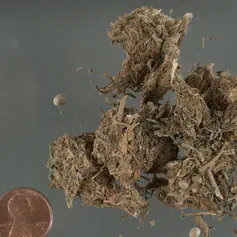
Courtesy of DEA.org
The flowering tops and leaves of the cannabis plant are widely trafficked. These are smoked after being rolled into cigarettes or placed in a pipe or glass bong.
Many people mix cannabis with tobacco before rolling it into a cigarette.6 This is especially common in Italy, Denmark, Sweden, the Netherlands, Belgium, Portugal, France, Austria, Germany, Ireland and Spain.
Skunk:
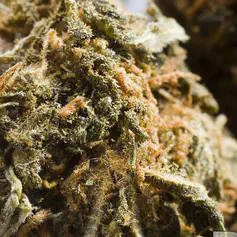
Courtesy of DEA.org
Especially high potency cannabis is called skunk or nederweed. An increasing proportion of the cannabis that is seized across the continent is composed of this form of the drug. Skunk is specially cultivated to develop a higher percentage of THC—the average is about 14%,7 but some reports place potency as high as 30%.8
A study published in 2019 concluded that daily use of cannabis and the higher potency of skunk that was increasingly available contributed to an increasing incidence of psychotic episodes among users.9 Information for this study was gathered from England, France, the Netherlands, Italy, Spain, and Brazil.
Hashish:
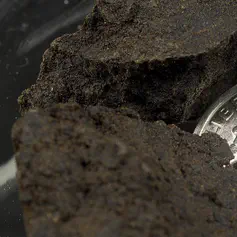
Courtesy of DEA.org
Cannabis can be processed to harvest the resins from the plant. When these resins are separated from the leaves and pressed into blocks, it is referred to as hashish or hash. It varies in colour from golden brown to almost black. Potency can reach 40% THC.8
Cannabis oil: The THC-rich resin is first extracted with solvents. Once the solvents evaporate, the sticky resin is mixed into an oil such as hemp seed oil. Oil commonly has a THC potency of 10% to 50% THC, but some concentrated products can reach 70% to 80% potency.5
Signs of Cannabis Use
The primary intoxicant in cannabis is tetrahydrocannabinol (THC). This chemical can be detected in the blood just seconds after the leaf form of this drug is smoked.10 It can still be detected in the urine for as long as two weeks after consumption.
Signs and symptoms of cannabis use include:
- Euphoria
- Sedation
- Drowsiness
- Lethargy
- Increased heart rate11
- Increased appetite
- Red eyes
- Increased blood pressure
- Laughter
- Talkativeness
- Dry mouth
- Changes in one’s sense of time
- Social withdrawal
But cannabis use can also cause a feeling of unease, anxiety and panic attacks in some users. High doses of potent cannabis can even cause serious symptoms like these:
- Disorientation
- Delusions
- Hallucinations
- Paranoia
- Poor memory
- Mood swings
- Interference with personal functioning
- Suspiciousness
These symptoms typically subside soon after cannabis use is discontinued.
Heavy use of cannabis can lead to a persistent psychotic state that resembles schizophrenia. This state can continue long after cannabis use is discontinued. This problem is considered “dose-dependent,” meaning the greater the use, the greater the risk.
There are specific cognitive impairments that result from the use of cannabis. They include:
- Impaired short-term memory
- Poor control of attention
- Poor performance of complex mental processes
- Impaired judgement
- Poor motor skills
- Increased reaction time
These cognitive effects also impair a person’s ability to drive safely. Short-term, cannabis use nearly doubles a person’s risk of a traffic accident.
Long-term Effects of Cannabis
According to the World Health Organization,long-term effects include: 12
- Cognitive impairment
- Suicidal behaviour
- Cardiovascular disease
- Chronic obstructive pulmonary disease
- Respiratory and other cancers
- Poor educational attainment
- Changes in brain structure
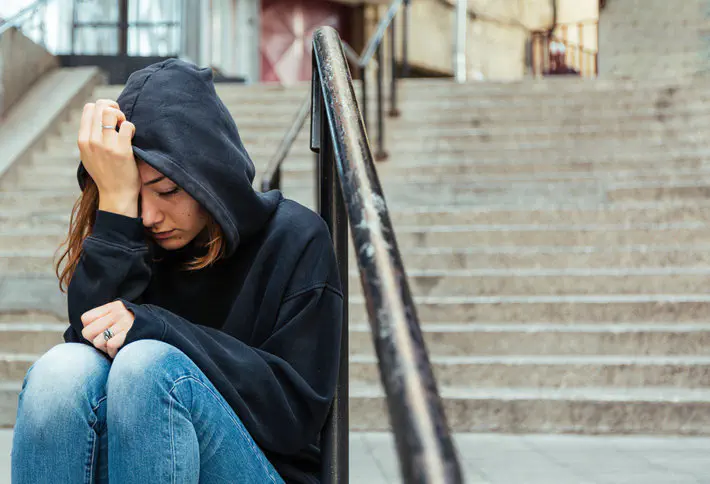
Of course, one of the long-term effects is addiction to this drug. This condition is marked by:
- Cravings for the drug
- Using more of the drug or using it more often
- Lack of success cutting down on use
- Use of the drug interfering with work, school or family life
- Spending a large amount of time acquiring, using or recovering from the effects of the drug
- Abandoning important social, educational or work activities
- Using the drug even in situations where it would be hazardous (for example, just before driving)
- Developing a tolerance so that more of the drug is needed to get the same effects
- Withdrawal syndrome when use of the drug is stopped
According to a report from the World Health Organization, those entering rehabs for cannabis addiction are typically younger than those entering rehab for addiction to other drugs. The peak age range for entering rehab for cannabis addiction is 15-19 years.12
While the use of cannabis has been considered therapeutic for reducing nausea and vomiting, the drug also has a contradictory effect. Heavy use of potent cannabis can result in cannabinoid hyperemesis syndrome (CHS).13 These words refer to a condition of protracted nausea, vomiting and severe stomach pain that do not respond to any usual medications. The only remedy sufferers normally find is spending hours in a hot shower or bath. It is common for people suffering from CHS to show up in emergency departments, trying to get help. Stopping cannabis use ends the condition.
For many years, it was argued that stopping use of cannabis did not result in withdrawal symptoms, but this has been disproven. Withdrawal symptoms include the following:
- Irritability
- Anger or aggression
- Nervousness or anxiety
- Insomnia
- Decreased appetite
- Depression
- Restlessness
- Stomach pain
- Shakiness
- Sweating
- Fever
- Headache
Sources:
-
Dirk W. Lachenmeiera, and Jürgen Rehm; US National Library of Medicine National Institutes of Healtyh (2015), “Comparative risk assessment of alcohol, tobacco, cannabis and other illicit drugs using the margin of exposure approach”. NCBI Study ↩︎
-
European Monitoring Centre for Drugs and Drug Addiction (2018), “Cannabis legislation in Europe—An overview”. EMCDDA Overview (PDF) ↩︎
-
European Monitoring Centre for Drugs and Drug Addiction, “Cannabis policy: status and recent developments”. EMCDDA Article ↩︎ ↩︎
-
European Monitoring Centre for Drugs and Drug Addiction (2017), “European Drug Report 2017—Drug use prevalence and trends—Cannabis use: varying national trends”. EMCDDA Report ↩︎
-
European Monitoring Centre for Drugs and Drug Addiction (2019), “New EMCDDA report highlights greater diversity of cannabis products, increasing potency and the need for close monitoring of health effects”. ↩︎ ↩︎
-
Dr Adam Winstock, Dr Monica Barratt, Dr Jason Ferris & Dr Larissa Maier; Global Drug Survey (2017), “Global Drug Survey 2017—Global overview and highlights N>115,000” GDS Survey key findings report (PDF) ↩︎
-
David J. Potter, et al.; Wiley Analytical Science Journals (2018), “Potency of Δ9–tetrahydrocannabinol and other cannabinoids in cannabis in England in 2016: Implications for public health and pharmacology” () Research Article ↩︎
-
altomstoffer.dk, “HASH”. altomstoffer.dk Article ↩︎ ↩︎
-
Marta Di Forti, PhD; et al.; theEU-GEI WP2 Group †—The Lancet—Psychiatry (2019), “The contribution of cannabis use to variation in the incidence of psychotic disorder across Europe (EU-GEI): a multicentre case-control study”. Lancet Article ↩︎
-
European Monitoring Centre for Drugs and Drug Addiction, “Cannabis drug profile”. EMCDDA Article ↩︎
-
Laurent Karila, et al.; Benthamscience.net (2014), “Acute and Long-Term Effects of Cannabis Use: A Review”. Report (PDF) ↩︎
-
World Health Organization (2016), “The health and social effects of nonmedical cannabis use”. WHO Publication (PDF) ↩︎ ↩︎
-
Galli JA, et al.; Europe PMC (2011), “Cannabinoid hyperemesis syndrome.” Europe PMC Article ↩︎

 ®
®
